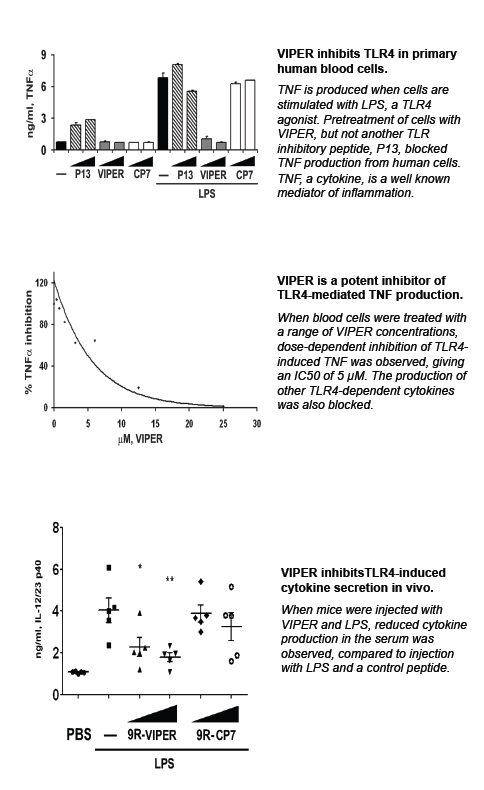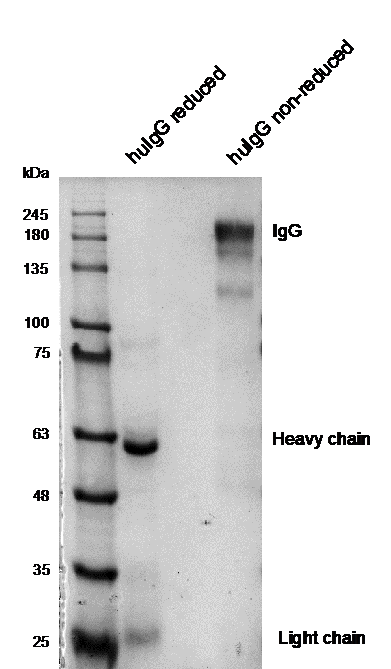
Cat. #153498
Anti-GFP [F56-6A1.2.3]
Cat. #: 153498
Unit size: 100 ug
Target: Green fluorescent protein
Class: Monoclonal
Application: ChIP ; ELISA ; IHC ; IP ; WB
Host: Mouse
£300.00
This fee is applicable only for non-profit organisations. If you are a for-profit organisation or a researcher working on commercially-sponsored academic research, you will need to contact our licensing team for a commercial use license.
Contributor
Tool Details
*FOR RESEARCH USE ONLY (for other uses, please contact the licensing team)
- Name: Anti-GFP [F56-6A1.2.3]
- Alternate name: GFP
- Research fields: Genetics;Tags and cell markers
- Clone: F56-6A1.2.3
- Class: Monoclonal
- Conjugation: Unconjugated
- Molecular weight: 26.9
- Host: Mouse
- Application: ChIP ; ELISA ; IHC ; IP ; WB
- Description: The green fluorescent protein (GFP) is a protein composed of 238 amino acid residues (26.9 kDa) that exhibits bright green fluorescence when exposed to light in the blue to ultraviolet range. Although many other marine organisms have similar green fluorescent proteins, GFP traditionally refers to the protein first isolated from the jellyfish Aequorea victoria. The GFP from A. victoria has a major excitation peak at a wavelength of 395 nm and a minor one at 475 nm. Its emission peak is at 509 nm, which is in the lower green portion of the visible spectrum. The fluorescence quantum yield (QY) of GFP is 0.79. The GFP from the sea pansy (Renilla reniformis) has a single major excitation peak at 498 nm. In cell and molecular biology, the GFP gene is frequently used as a reporter of expression. In modified forms it has been used to make biosensors, and many animals have been created that express GFP as a proof-of-concept that a gene can be expressed throughout a given organism. The GFP gene can be introduced into organisms and maintained in their genome through breeding, injection with a viral vector, or cell transformation. To date, the GFP gene has been introduced and expressed in many Bacteria, Yeast and other Fungi, fish (such as zebrafish), plant, fly, and mammalian cells, including human.
- Immunogen: Green fluorescent protein
- Isotype: IgG2b
Target Details
- Target: Green fluorescent protein
- Molecular weight: 26.9
- Target background: The green fluorescent protein (GFP) is a protein composed of 238 amino acid residues (26.9 kDa) that exhibits bright green fluorescence when exposed to light in the blue to ultraviolet range. Although many other marine organisms have similar green fluorescent proteins, GFP traditionally refers to the protein first isolated from the jellyfish Aequorea victoria. The GFP from A. victoria has a major excitation peak at a wavelength of 395 nm and a minor one at 475 nm. Its emission peak is at 509 nm, which is in the lower green portion of the visible spectrum. The fluorescence quantum yield (QY) of GFP is 0.79. The GFP from the sea pansy (Renilla reniformis) has a single major excitation peak at 498 nm. In cell and molecular biology, the GFP gene is frequently used as a reporter of expression. In modified forms it has been used to make biosensors, and many animals have been created that express GFP as a proof-of-concept that a gene can be expressed throughout a given organism. The GFP gene can be introduced into organisms and maintained in their genome through breeding, injection with a viral vector, or cell transformation. To date, the GFP gene has been introduced and expressed in many Bacteria, Yeast and other Fungi, fish (such as zebrafish), plant, fly, and mammalian cells, including human.
Applications
- Application: ChIP ; ELISA ; IHC ; IP ; WB
- Application notes: Purified via protein G
Handling
- Format: Liquid
- Unit size: 100 ug
- Shipping conditions: Shipping at 4° C



